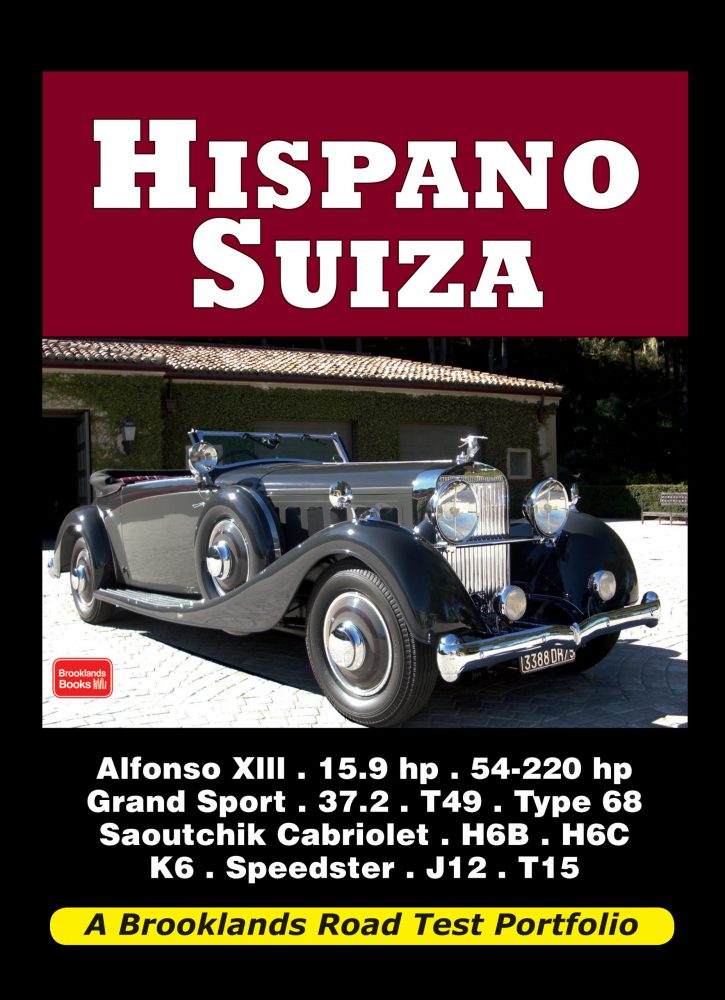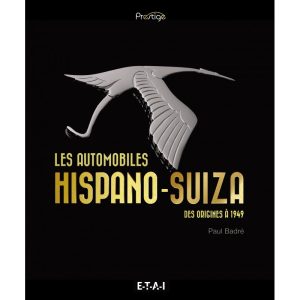Beschrijving
Hispano Suiza Road Test Portfolio.
At its formation in 1904, the declared aim of the Hispano-Suiza company was to produce high-quality automobiles that were elegant, fast and reliable – the type of luxury vehicles that could only be afforded by the extremely wealthy. Initially based in Barcelona, the company name reflected its origins of dual-nationality; Spanish financial backing being provided for the talented Swiss engineer and designer Marc Birkigt who became Technical Director.
After a relatively slow start, Hispano-Suiza gained recognition as a maker of prestige motor cars with the 1906 six-cylinder 30/40hp model, but it was the T.15 of 1908 which established the marque in the upper echelon. King Alfonso XIII was so impressed by a test run in this car that he not only ordered one immediately, he also gave permission for it to be named after him. In 1911 the engine capacity of the Alfonso XIII model was increased to 3,620cc (from 2,610cc) and that same year the company opened a factory in France.
Thanks to the Spanish monarch’s backing, in 1916 another assembly plant was established in Guadalajara to build buses and trucks as well as cars. But by this time Birkigt was resident in Paris and, although cars continued to be built in Spain, from then on the highest quality Hispano-Suiza models would come from the French arm of the company – including one of the finest (and easily most expensive) cars of the 1920s, the H6 series which many believe surpassed all other makes of the period, including Rolls-Royce.
In 1929 Hispano-Suiza acquired the Ballot car company together with its Paris factory and this merger resulted in some smaller models being produced, which were known by various names – Hispano Junior, Ballot HS26, etc – using a 4.5-litre six-cylinder engine built in Spain.
However, it was the creation of the T.68 (also called the J12) model towards the end of 1931 that produced the ultimate Hispano-Suiza. Powered by V12 engines of 9.4-litre or 11.3-litre capacity, these chassis were graced with magnificent custom bodies built by the most famous coachbuilders. Two years later the six-cylinder K6 arrived as a replacement for the H6 model but car production at the French factories ended with the outbreak of the Second World War.
Although there were hopes of resuming car manufacturing in the post-war years this never happened. Thereafter the Hispano-Suiza company concentrated on sub-contract work and aero engines, before taking over Bugatti and, in 1968, becoming part of the SNECMA aerospace combine.
Today Hispano-Suiza represents the pinnacle of automobile design from a golden age when, for the fortunate few, money was no object. This glorious automotive heritage is reflected by the contents of this book.We trace the illustrious history of Hispano-Suiza cars which were initially built in Spain & driven by their King Alfonso XIII. They were designed by the innovative Swiss engineer Marc Birkigt & latterly produced in France. Included are road tests, coachwork styles, new model introductions plus technical data. Models covered: Alfonso, 15.9hp, 54-220hp, Grand Sport, 37.2hp, T49, J12, T15, H6B, H6C, K6, Speedster and the Saoutchik Cabriolet.
Engels, paperback, 180 pagina’s, Brooklands Books.
ISBN 9781855209152.




